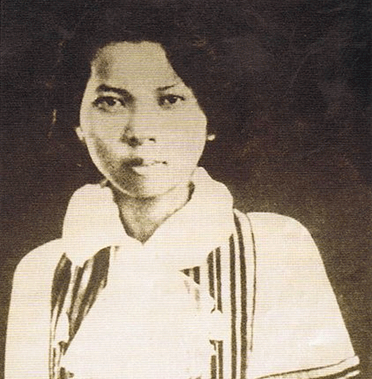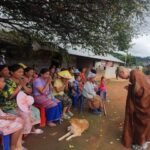Dr. Susan F. Kepner
University of California, Berkeley
?

M.L. Bunluea Thepyasuwan (1911-1982) was a revered teacher of literature, a novelist, and a leading contributor to the development of Thai education during the Thai twentieth century. Ajarn Sulak Sivarak could well have been describing her, when he wrote these words:
?The Duty of a Teacher?
I say that the ideal, the best teachers are those who work to lift the spirits of their students, and who serve society by struggling to impart the idea of taking responsibility in good times and bad. Their teaching encompasses all that pertains to honor and dignity between human beings. They are interested in issues of morality, [good] governance, and protection of the natural environment. It is no longer enough for a teacher to be focused only on the narrow world of the school and the classroom. The teacher must represent a connection between the school, and the world beyond; and between youths and adults, in order to obviate the gaps that continue to prevail.
An interesting example of M.L. Bunluea?s efforts to teach beyond the classroom, through her fiction, is her unusual and controversial utopian novel, Suratnari, published in 1972. She said that her first objective was to tell an entertaining story in which shipwrecked men find themselves in a strange and exotic land that was very like Siam in some ways, yet its opposite in others. But it was her secondary objective that interests us most, forty years later. The novel was to be edifying, and inspiring: readers would learn how Thai society could be improved, if they would build on the strengths of the Siamese past, including Buddhist ideals of personal conduct and national will. These traditional ideals could and should be melded with contemporary ideas concerning gender equality and the wise use of technology.
In the fictional kingdom of Suratnari, all positions of power and influence are held by women, while men?s lives are very like women?s lives in the Thailand her readers knew. But gender equality, or, in the Thai parlance of the 1970s, ?wimmin? lip,? was generally considered to be an unappealing Western concept, and few Thai women (to say nothing of Thai men) found the ideas behind the slogans to be compelling. Even in the pages of Suratnari, a scene in which Western women are described portrays them as large, loud, graceless creatures. The leaders of Bunluea?s imaginary kingdom, on the other hand, are graceful, attractive, and feminine ? in a commanding way. Daughters are favored over sons, as illustrated in the following gleeful description of a typical Thai-Surat family on an outing, a reversal of typical family behavior in Thai-Siam:
When the Suratians go out as a family, the woman leads. Her manner bespeaks her role as leader. One can see that she is clever, and wise…. The sons are pushed back a bit, they walk behind, while the daughters stride forward to walk with the head of the family. Some of these heads of families carry small children in their arms, but when they tire, they give them to the older boys to hold. (Bunluea, Suratnari, Bangkok: Phrae Phitthaya, 1972, page 373)
In the novel?s 841 pages, Bunluea shared a lifetime of reflections on relationships between Thai men and women. She had just retired from the civil service, and some of her long-standing grudges related to her career, including a glass ceiling that no one denied, were reflected in the details of personalities and careers in the novel. However, some of the lady readers of Thailand were infuriated by the lady leaders of Suratnari. They did not expect the heroines of their novels to have high level jobs and opinions on national development, much less husbands ? and ?minor husbands.?
Beyond gender issues, Bunluea indirectly critiqued the Thai political and economic realities of the early 1970s, when the kingdom remained closely allied with the U.S., and was its ally in the devastating war in Thailand?s neighboring nations. She made it clear that domestic Thai development projects were, in her estimation, becoming ever less attractive, and more worrisome. In Suratnari, women leaders worked diligently to improve the environment, and to protect the air, water, and land of Surat. In the Thailand of 1972, more immediate and materialistic goals took precedence. It was an edifying, even a ?speechifying? novel, and was the least popular of her books. She was disappointed that only a few literary colleagues were enthusiastic about it. Now, however, with the hindsight of four decades, Suratnari stands as an important source of social history, and I think that that would please her. Many of the imperatives that predominate in Suratnari are of great concern in Thailand today, particularly that of preserving and protecting the natural environment. It is often said that ?When the student is ready, the teacher will appear.? Occasionally, a teacher arrives before the students are ready for the lesson that has been prepared.
(This article contains excerpts from a forthcoming bi
ography: Susan F. Kepner, A Civilized Woman: M.L. Boonluea Thepyasuwan and the Thai Twentieth Century, Silkworm Books.)











